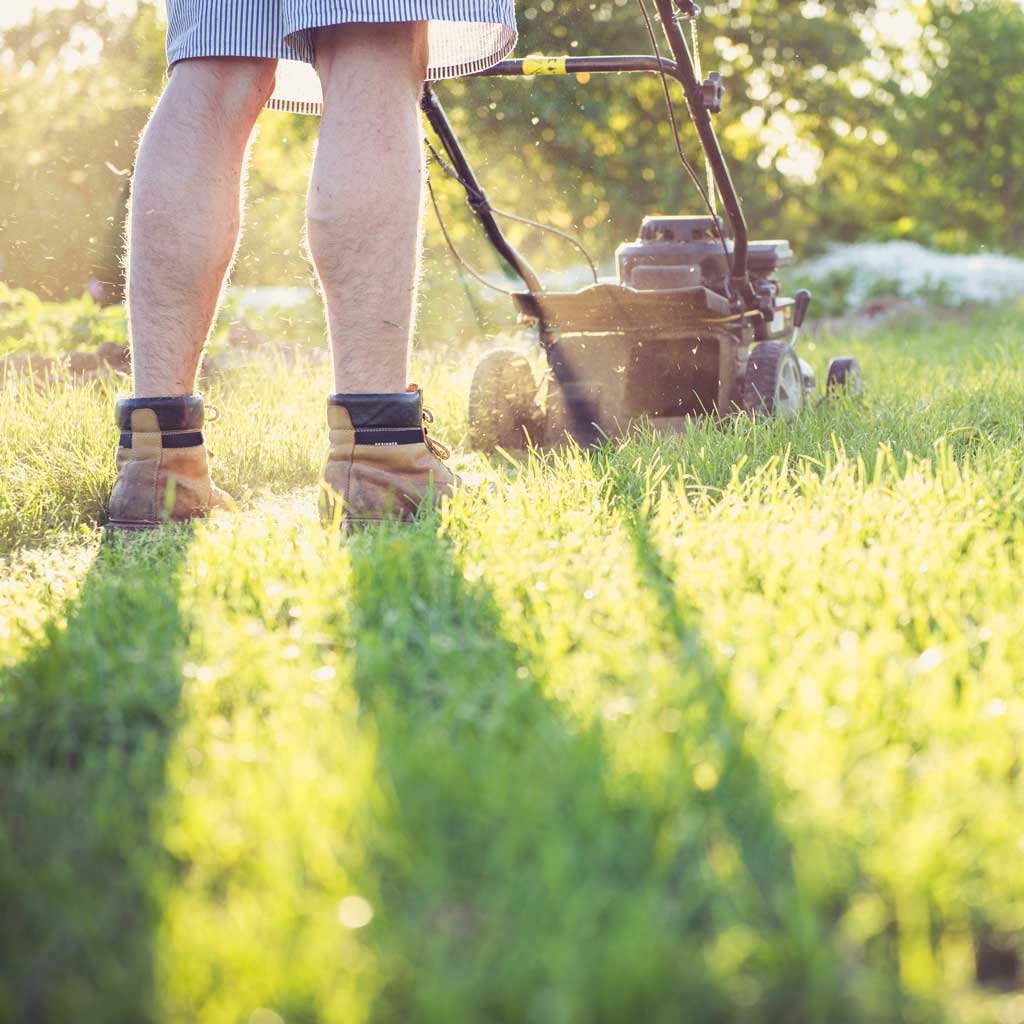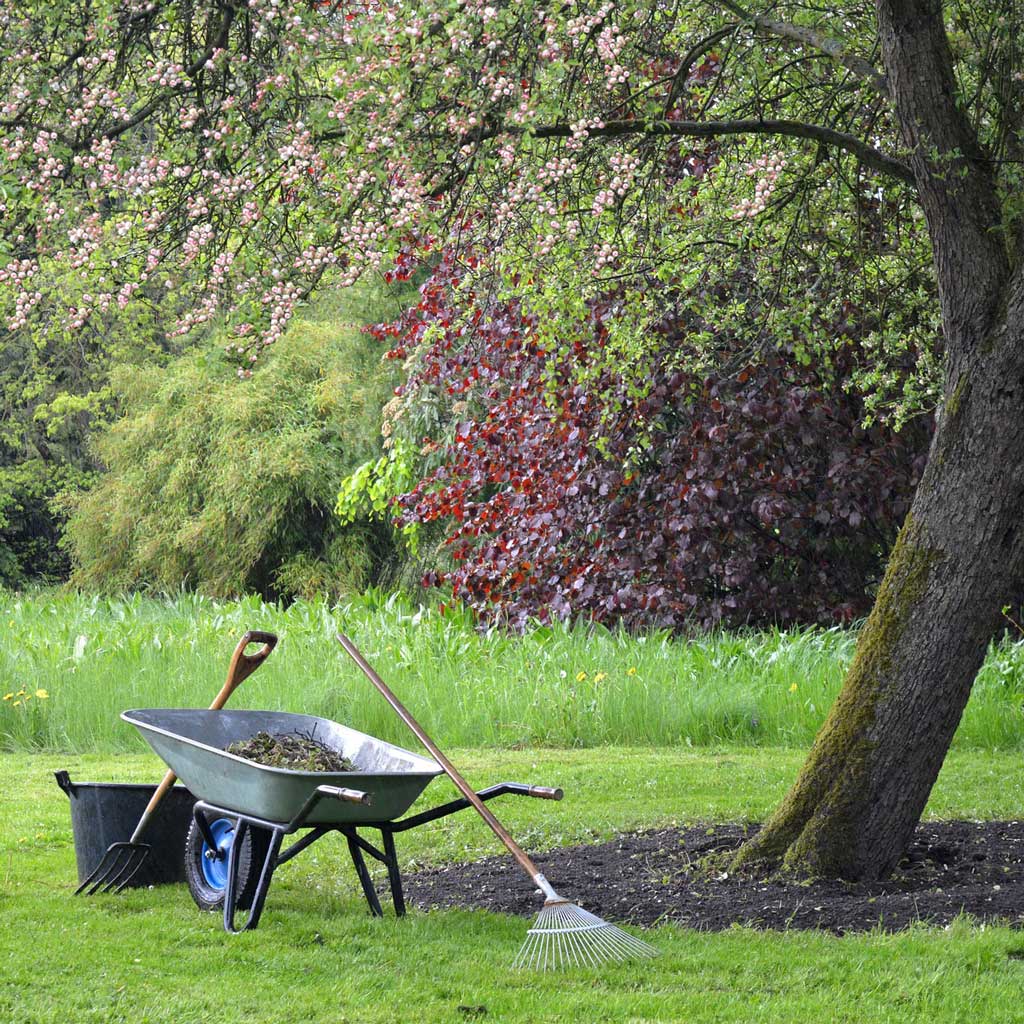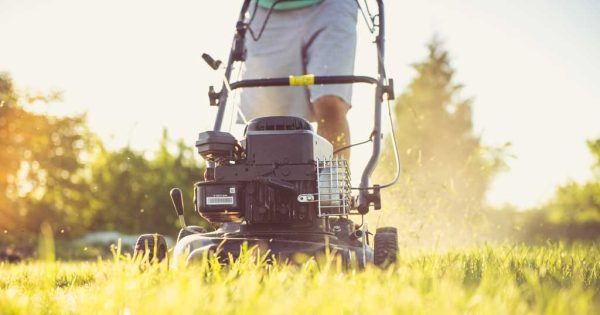If you’ve ever wondered when to cut grass after winter — stop scrolling — here’s all you need to know. Plus lots more tips on general lawn-care and advice to keep your garden looking fabulous.
What Month Do You Start Cutting Grass Again?
As soon as March arrives, many gardeners will be looking to cut grass after winter and get ready for the first mow of the year.
This will mean dusting off the lawnmower and other gardening tools in preparation for the warmer months ahead.
However, this is also the time of year that many new homeowners and novice gardeners are wondering – when is the right time to mow the lawn for the first time each year and what length should we mow the lawn?
To help clear things up, My Job Quote‘s gardening expert, Fiona Jenkins is here to provide all the answers you need.
Whether it’s the ideal length of the cut, the right time to make that first cut, or the tips you need to ensure your grass remains healthy moving forward, Fiona has everything you need to know.

All You Need To Know About When To Cut Grass After Winter
It’s most likely that you will need to start cutting the grass in March. However, the local conditions, location of the property, and the weather conditions will affect the date that you should start cutting the lawn.
18th March is the average date of the first lawn cut in the UK.
Grass begins to grow when the soil temperature goes above 6 degrees Celsius.
Below are some tips on cutting the lawn for the first time after winter:
- Just take a small amount off the top of the grass on the first cut. Taking off less than a third of the height during the first cut is recommended. If you cut too close, this will stress the grass and may cause shallow roots, resulting in your lawn being more susceptible to disease, drought, and bare patches. You can begin to progressively take more off the length the following weeks.
- It’s best to cut the grass later in the day so that any potential frost has thawed and dew has evaporated. It’s always best to cut grass when it’s dry.
- If the grass is too wet, the weight of the mower may damage the grass and compact the soil. This will then make it harder for the grass to establish healthy roots. If it has been raining a lot or if the soil is heavy, wait a few days before completing the first mow.
What is The Right Height to Cut Grass?
Most of the time, lawn grass is best kept at around 2.5cm – 4cm in height.
If there are patches on your lawn that get quite a lot of heavy use or that are stepped on regularly, these can be left a little longer at around 4cm – 5cm.
In shady areas of the lawn, you can leave it even longer at around 7cm – 8cm.

My Grass Has Gone Brittle After Winter – How Can I Fix It?
If your grass is looking a bit brittle after winter, you’ll want to fix it before the spring months come in so you can start enjoying your garden again when the weather gets nicer.
Follow the steps below to fix a brittle lawn:
- Start by removing all of the debris from the lawn. Rake away any leaves and other debris.
- Then, move on to mowing your lawn, giving it a medium-length cut.
- Once the lawn has been cut, rake the area to loosen the soil underneath.
- Add some lawn food to entire lawn.
- Lightly water the lawn and follow this up with frequent light watering a couple of times each day to help encourage blade growth.
How to Remove Lawn Weeds – Various Methods
Pull The Weeds Out
If you have a relatively small lawn, you may be able to get rid of all of the weeds by hand. Removing the root is the most important thing to remember when pulling up weeds by hand. Pull carefully at the base of the weed to make sure it is pulled out completely. If you are pulling up nettles, always wear gloves when doing so.
If you’re struggling to pull the roots up with just your hands, consider investing in a weed pulling tool.
Use Lemons to Kill The Weeds
You can easily kill weeds with something as simple as a lemon. Cut a lemon in half and then squeeze the juice over the weed. The citric acid in the lemon should kill your weed within a few days. This method is especially effective when there is strong sun shining on the lawn. The lemon juice can be used as it is, there is no need to dilute it.
Alternatively, you can get some powdered citric acid and mix this with water in a spray bottle. Then, simply spray the weed with the solution.
Use Salt to Kill The Weeds
Salt can be quite effective at killing weeds. Sprinkle some salt liberally over the weed and leave it there. This should kill off the weed within a few days. Salt is also great for deterring insects and slugs.
Be careful not to sprinkle the salt on the surrounding lawn and this could kill off some of the grass.
Allow Your Lawn to Grow
Sometimes, simply allow your lawn to grow longer can be all it takes to kill off the weeds. If the grass blades can grow taller than the weed, this will block the sunlight from reaching the weeds.
The stronger roots of your grass may also be able to choke out the weed’s roots, preventing them from becoming an issue in your lawn. Weeds are quite resilient though, so this may not always be an effective method.
Use Eco-Friendly Weed Killers
Many weed killers can be quite toxic and dangerous. However, there are now many eco-friendly weed killers available to buy.
These solutions usually come in a spray bottle. Simply spray the solution directly onto the weed and leave it to do its thing. These eco-friendly weed killers will usually kill off the weeds within a few days.
Use a Vodka Solution
This method works best for weeds that get a lot of sunlight. Create a mixture of 1 part vodka and 2 parts water. Then, add a couple of drops of liquid dish soap to the solution. Put this solution in a spray bottle for easier application.
Spray the solution directly onto the weed and this will dry the weed out and kill it off. Be sure to avoid spraying the solution on the surrounding grass as it will also dry out your grass and make it look quite unappealing.
Use Boiling Water
Boiling water is a great way to help kill off weeds. However, you’ll want to avoid getting the boiling water on the surrounding areas of grass as it could cause some damage.
Boil some water in the kettle and take this outside. Then, pour the boiling water directly on the weed. This will cause the weed to burn up.

Lawn Mistakes to Avoid to Keep Your Grass Healthy
Not Testing The Soil
Most homeowners will just plant grass without any prior testing. However, it’s best to test the soil before planting the grass. Grass grows best in conditions with a soil PH level of 6 – 6.5.
Scalping The Lawn
Mowing the lawn too short is one of the most common mistakes homeowners can make. Many homeowners will choose to cut the lawn shorter to prolong the length of time between cuts. This can be damaging to the lawn as it can put excess stress on the grass, making it more susceptible to diseases, drought, and pests. As a general rule, it’s best to try to keep you lawn at a height of 3 inches. This will ensure it retains its top growth and stays strong enough to deal with everything nature throws at it.
Using The Wrong Fertiliser
Fertilising the lawn is a great way to keep it healthy. However, it’s important to use the right amount of fertiliser. Using the wrong fertiliser for your grass is vital in ensuring the lawn remains healthy. Incorrect products that don’t match up with your type of grass can sometimes damage the grass. Using too much or too little of the fertiliser can also affect the grass. Using too much fertiliser can be damaging to the lawn and using too little fertiliser can be ineffective. Applying fertiliser at the wrong time of year can also affect the results. Make sure you check you have the right fertiliser for your lawn before applying it. Always follow the manufacturer’s instructions for the application.
Cutting With Blunt Blades
Dull blades can cause some serious damage to the lawn when it comes to cutting the lawn. Blunt blades won’t effectively cut the grass. Instead, they will tear through it, damaging the grass in the process. Jagged blades of grass are much more susceptible to disease. The grass will also be much more likely to turn brown. You should aim to sharpen your mower blades twice a year to keep them in best shape.
Over Watering
One of the most common mistakes when it comes to lawns is overwatering. Water is a naturally vital ingredient to a healthy lawn. However, too much water can cause harm. Applying too much water to the lawn can lead to waterlogging. It can also stunt the development of roots. If the weather is rainy, you may not need to water your lawn at all. If the weather is dry, it’s best to give your lawn around an inch of water each week.
Lack of Aeration
The consequences of not aerating your lawn can be quite significant. Aerating the lawn soil allows water to permeate the surface much more easily. This then allows he soil to absorb all of the relevant nutrients. This is particularly important when it comes to compacted or clay-heavy soil. You can achieve aeration by simple piercing holes in the surface. You can do this with a manual aerator or a standard fork. If you have quite a large lawn, you may want to invest in a powered aerator.
Not Raking Up Leaves
If you don’t rake up the leaves from your lawn regularly, they can start to stick together to form an impenetrable blanket. This can then kill the grass underneath and encourage the growth of fungal diseases. With this in mind, it’s important to keep on top of removing the leaves from your lawn. As soon as you start to see any leaves or debris building up on the lawn, get the rake out and get those pesky items off your grass.
Featured image courtesy of Magic K

